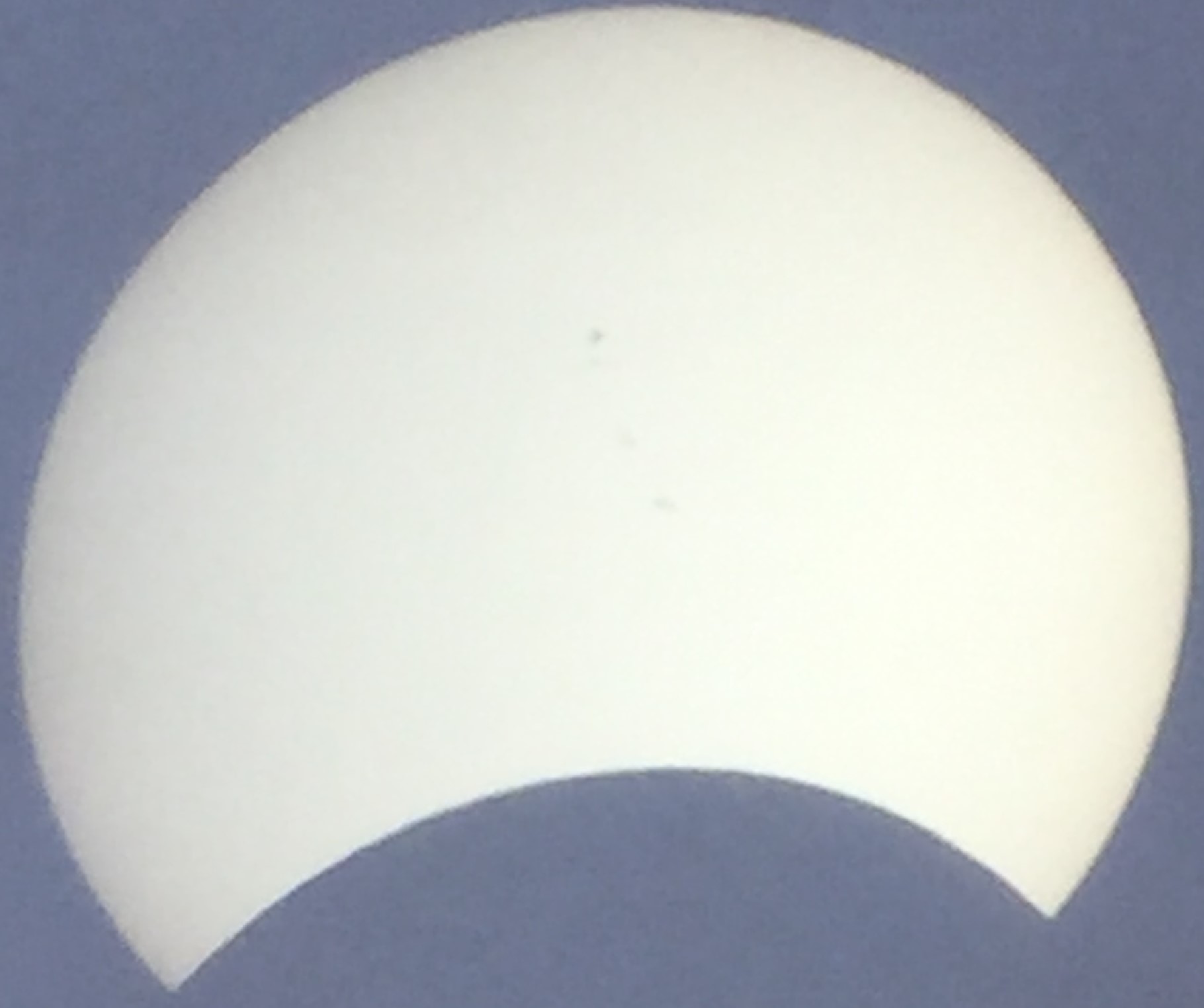Signs of Sunspot Cycle Returning to Normal

Photo Credit: WASI Webmaster Thomas Milley
Astronomers have charted the sun’s cycle of sunspot maximum and minimum for hundreds of years. The roughly 11-year cycle includes a maximum as the number of dark visible sunspots crescendos followed by a diminishing number of spots leading to the cycle minimum.
In the most recently completed cycle, the number of sunspots noticeably diminished. The cycle’s sunspot maximum was the lowest since the opening decade of the 20th century. Another of the cycle’s statistics, the average daily sunspot count was the lowest since this statistic started being tracked in the mid-1800s.
So, what about the next (current) cycle, will it see a return to normal or will the dearth of sunspots continue? It depends on who you ask as it comes down to modeling. One joint model by the National Oceanographic and Atmospheric Administration and the National Aeronautics and Space Administration NOAA/NASA predicts yet another weak cycle with little change over the prevailing circumstances.
But a team from the National Center for Atmospheric Research is predicting that we can expect the current cycle to deliver the strongest sunspot turnout on record. The prediction is based on yet another cycle on top of the usual 11 year cycle. Indeed, a couple of large highly complex sunspot groups formed near the end of the year 2020.
Another solar cycle occurs every 22 years, or every other sunspot cycle, as the sun experiences a reversal of its magnetic polarity. It is as if the sun were a bar magnet whose north and south poles suddenly switch. The sunspots themselves have magnetic polarity. The spots in the sun’s northern hemisphere have an opposite polarity to the spots in the southern hemisphere. When the solar polarity reverses every 22 years so does the magnetic polarity of the sunspots themselves.
It should be pointed out that the time periods involved in these cycles has no bearing on the lifespan of any individual spots themselves. They form, grow, shrink and disappear on much shorter cycles of days or weeks.
What does this mean for us on the earth, is there any effect from the growing and shrinking number of sunspots? Complex active sunspot groups are a source of magnetic fields and occasionally powerful flares which spew out plasma and energized particles. Upon encountering the earth, the solar flare can disrupt telecommunications and even damage satellites or other space probes. Stronger flares may induce currents damaging electrical distribution systems on the ground. The particles excite the atmosphere causing it to expand. The expanding atmosphere causes drag on orbiting satellites causing their orbits to decay faster.
Another question has to do with the effect of sunspots on Earth weather. The data is not as clear. Sunspots appear dark because their temperature is lower than the solar photosphere – the bright layer of the sun we see. Although cooler than the rest of the sun’s surface, some scientists postulate that sunspots have an overall warming effect on the sun. And when the sun becomes warmer then so does Earth.
Amateur astronomers monitor the sun from their back yards using telescopes specially equipped to safely observe the sun. Although it remains closed to the public due to pandemic precautions, the B.F. Roelke Memorial Observatory at the Bear Branch Nature Center (BBNC) has a telescope specially equipped for solar viewing. When the observatory reopens so will the opportunity to view the sun and stars at the facility.
Likewise, the planetarium at BBNC remains closed. Fortunately, the Westminster Astronomical Society (WASI) hosts a free monthly “virtual planetarium” program using ZOOM conferencing. The planetarium programs are presented on the 3rd Wednesday of the month starting at 7:30 p.m. ET. The zoom address can be found on the WASI web site, westminsterastro.org. The ZOOM meeting URL is the same each month for the recurring programs, so April’s is the same as March’s.
–Curt Roelle
